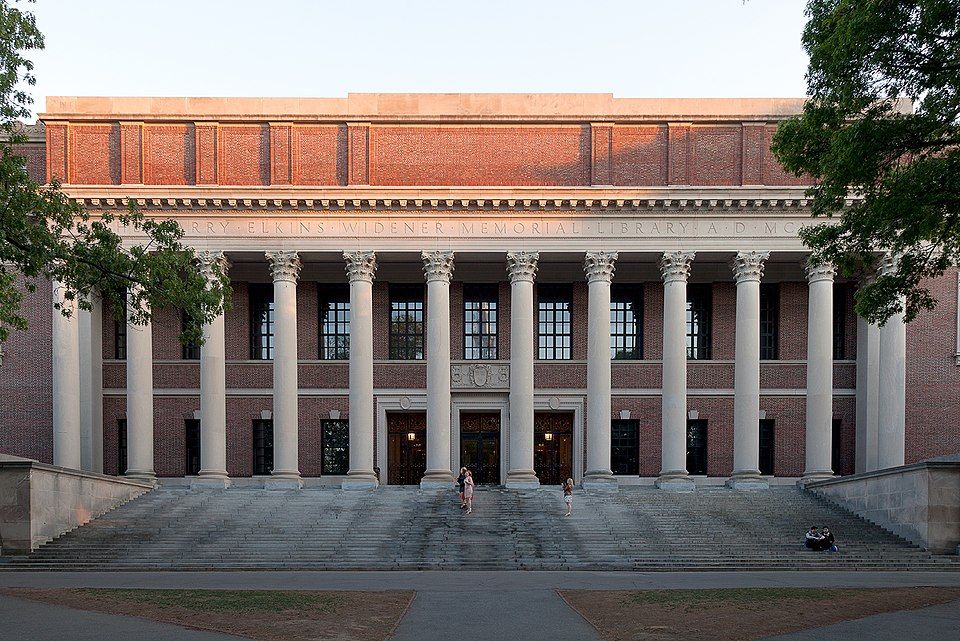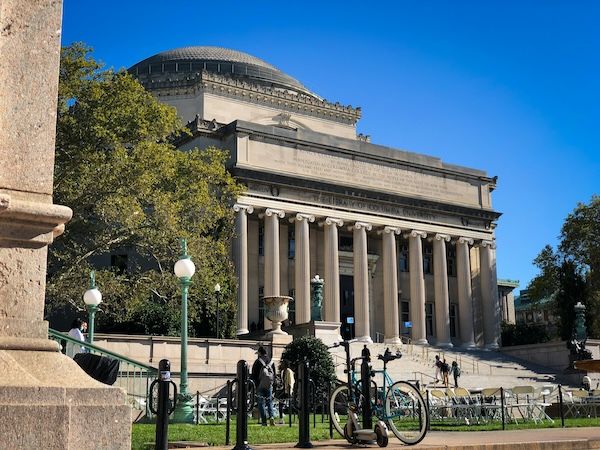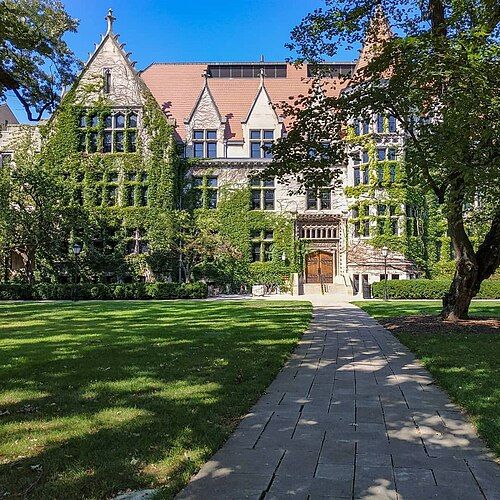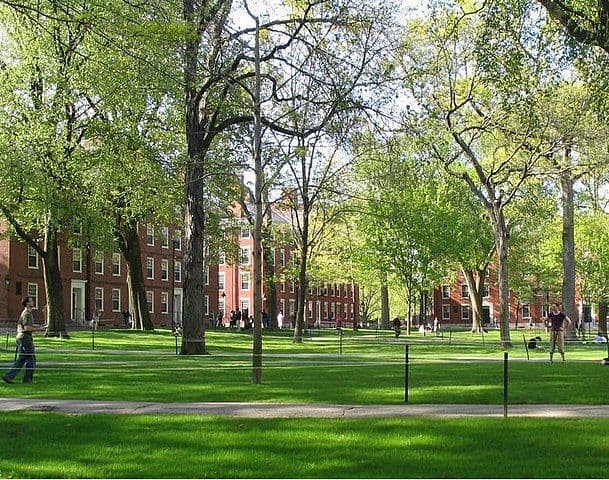
The Hardest Colleges to Get Into in the US in 2025
Director of Admissions, John Morganelli, shares the hardest colleges to get into based on acceptance rates and answers a few frequently asked questions.

Photo by Pixabay
What’s a question Ivy Tutors Network gets all the time from students - and parents? What’s the hardest college to get into? The short answer is the “HYPSM” school: Harvard, Yale, Princeton, Stanford, and MIT. But there are other elite universities with single-digit acceptance rates and equally demanding expectations (John actually addressed a few of them on Instagram recently).
In this blog, John Morganelli - Ivy Tutors Network’s Director of College Admissions - breaks down which colleges are the toughest in 2025, and briefly explains why that is. Spoiler: acceptance rate is only one piece of the puzzle. Find schools that John is frequently asked to compare in an FAQ section at the end.
Trying to get into a Top 25 school? John’s proprietary methodology, the Morganelli Method, can help you craft a stand out application. Learn more about it here.
Hardest Colleges to Get into In 2025
How We Ranked
Ivy Tutors Network’s Director of College Admissions, John Morganelli, Jr., is a former Director of Admissions at Cornell. Creator of the Morganelli Method, John and Ivy Tutors Network help students get into Top 25 institutions by understanding the unique requirements of each school. The Morganelli Method breaks down schools into proprietary tiers that, while they account for acceptance rate, focus on the narrative depths and complexity required during the application process, and that affects how we rank which are the “toughest” schools.
Tier 1: HYPSM (3–7%)
With acceptance rates between 3–7%, these five universities are considered ultra-selective. Successful applicants typically have:
- Standardized Test Scores: 1500+ SAT or 34+ ACT
- Class Rank: Top 5%
- Academic Depth: Significant engagement in 2–3 academic areas
- Narrative Cohesion: A clear connection between past activities and future aspirations

Harvard University
The hardest college to get into overall (roughly a 3% admit rate), Harvard is known for selecting multi-dimensional leaders. See [How to Get Into Harvard].
Yale University
Yale’s acceptance rate hovers around 4-5%. It’s known for a strong focus on humanities-driven intellectual curiosity. See [How to Get Into Yale].
Princeton University
Princeton’s acceptance rate is roughly 5%, and it's particularly competitive for STEM and public policy majors.
Stanford University
Stanford accepts approximately 4% of students who apply. Essays and intellectual ethos carry extraordinary weight (P.S. - this is what the Morgenelli Method excels at!).
Massachusetts Institute of Technology (MIT)
With an admit rate around 4% admit rate, applicants to MIT need extreme STEM engagement and research depth.
Tier 2
The next ten hardest schools are situated at the top of what the Morgnelli Method calls “Tier 2 schools”. These schools are just a notch more accessible but remain single-digit admit rate institutions, typically between 5–9%. Each demands academic excellence and institution-specific strengths.

Columbia University
Columbia accepts approximately 4% of students who apply. It’s known for its Core Curriculum and NYC-based opportunities. See [How to Get Into Columbia].
University of Pennsylvania (especially Wharton School of Business)
UPenn’s admission rate fluctuates between 5 and 8%, but the Wharton School of Business is just 4.5% for undergraduates, and is considered one of the hardest business programs in the world, particularly at the graduate level.
Brown University
With an approximate 5% admit rate, Brown rewards creativity and narrative originality. See [How to Get Into Brown].
Duke University
Duke (approx 6% admit rate) is selective across the board, placing a strong emphasis on leadership and research.
Dartmouth University
At a similar acceptance rate to Duke (approx 6%), Dartmouth emphasises narrative cohesion. Its small class sizes drive up the competition to get in.
John Hopkins University
At a 7% admission rate, John Hopkins is a research powerhouse and a top choice for pre-med and STEM applicants.
Northwestern University
The first school on the list located in the Midwest, Northwestern accepts about 7% of applicants. It’s known for its strong programs in journalism, economics, and theater, as well as STEM.

University of Chicago
The University of Chicago sits firmly in Tier 2, admitting fewer than 7% of applicants. What sets it apart isn’t just the statistics, but the extraordinary weight placed on essays and intellectual ethos. UChicago’s famously unconventional prompts demand both creativity and rigor, making it one of the most narrative-intensive applications in the country.
California Institute of Technology (Caltech)
With a 3–4% admit rate, you might expect Caltech to rank among the very hardest schools. But unlike Harvard or Stanford, where essays and narrative strategy can make a decisive difference, Caltech admissions hinge almost exclusively on proven STEM mastery and research experience. That focus means its selectivity is less about storytelling complexity and more about whether your profile already matches their exact criteria.
Amherst College or Williams College
Both Amherst and Williams are elite liberal arts colleges with 7-9% admittance rates. They have Ivy-level academic standards, and demand both curiosity and intellectual depth from their students.
FAQ - Which School is Harder?
We can get asked some pretty specific questions about which schools are the hardest to get into. We’ve had John answer them below.
What is the #1 hardest school to get into?
Harvard University, with a ~3% acceptance rate, remains the hardest college in 2025. Stanford and MIT follow closely, with Yale and Princeton rounding out the top five.
Is Duke or Vanderbilt harder to get into?
Duke. With ~6% acceptance compared to Vanderbilt’s ~10–12%, Duke is significantly harder and emphasizes leadership plus research depth.
Is Duke or Brown harder to get into?
Comparable. Both admit around 5–7% of students. Brown rewards narrative creativity, while Duke emphasizes leadership and research.
Is Princeton harder to get into than MIT?
Statistically, MIT is slightly harder ( about 4% acceptance rate vs. Princeton’s ~5%), but both require near-perfect academics. MIT places extraordinary weight on STEM research.
Harvard v Stanford
Harvard admits ~3% vs. Stanford’s ~4%. Both are at the pinnacle. Stanford weighs essays and ethos more heavily, while Harvard prioritizes well-rounded leadership and achievement.
UC Berkeley v University of Michigan
Berkeley. At ~11–12%, it’s more selective overall than Michigan (~18–20%), especially in STEM and Computer Science. Michigan can also be more accessible for in-state students, while remaining a reach for some out of state students.
Yale v Princeton
Both admit ~4–5%. Yale leans toward humanities-driven intellectual depth, while Princeton favors STEM and policy applicants.
UPenn v Duke
UPenn, especially for the Wharton School of Business, which has a less than 5% acceptance rate. Duke admits around 6–7%.
Final Thoughts from John
While acceptance rates tell part of the story, Ivy Tutors Network and the Morganelli Method emphasize that the hardest schools require more than “good stats”. Top tier schools expect students to present a cohesive narrative that emphasizes intellectual curiosity and tangible contribution. This factor often separates admission from denial — and it’s exactly where our admissions coaches focus, helping students turn strong profiles into compelling narratives that top schools can’t ignore.
If getting into a Top 25 institution is your goal, schedule a consultation with our team.




